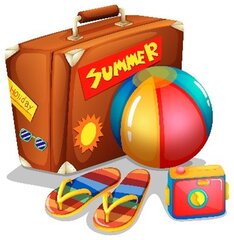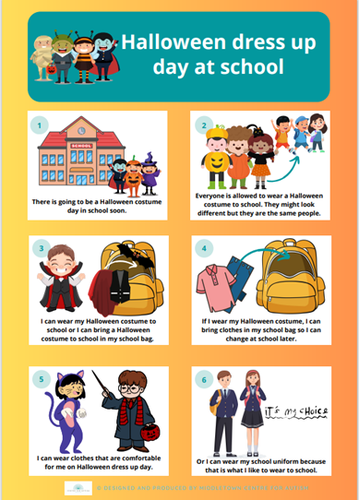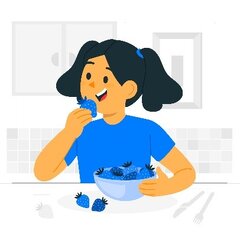Social Stories and Comic Strip Conversations
Social Stories are a tool that can support a child to learn about a social situation, prepare for a new experience, or teach a new skill. Comic Strip Conversations can be a good way to break down social situations that may have been confusing or upsetting for a young person. They can also be a good way for a parent to better understand their child’s perspective.
What is a social story?
Social Stories™ were created by Carol Gray in 1991.
A social story is a tool that supports a child to learn about a social situation. It can also support a child to prepare for a new event/experience, and teach a new skill.
Why use a social story?
Some children can have difficulty in social situations – these situations can feel unpredictable and confusing for several reasons:
- The child may not understand that others have their own thoughts, feelings, plans and point of view that differ from theirs.
- They may feel like the actions of others are random, occur without meaning, have no logic or clear purpose.
Social stories try to address this by giving the child some perspective on the thoughts, emotions and behaviours of others.
How does a social story work?
- A social story is clear, concise, accessible and presented in a calm environment.
- A social story contains concrete, real life information so the child doesn’t need to imagine what to do.
- A social story picks out the most important social rules and explains then clearly.
How to write a social story
Focus
- Identify the target, skill or event in the title. For example, “Waiting for my turn to ask a question in class”.
- Focus on one thing or event at a time in a social story.
Format
- Keep it simple. Break the story down into simple steps.
- Use pictures to match the text. You can use photos, cartoons and emojis. Different children relate to different types of pictures
Text
- Keep the language simple. Minimise the use of multiple sentences joined up with the words “and”, “but” or “because” etc.
- Keep the language positive. Focus on what the child can do rather than what not to do.
- Write from the child’s perspective, in the first person and in the present tense. For example, I like to talk to my teacher in class. I wait my turn to talk to her. I put up my hand to let her know I have a question. She calls my name to let me know I can ask my question.
- When talking about the future, it might be helpful to phrase it as “when I go to school, I will……” rather than “I will be going to school and I will …..”.
- Some children have difficulty with pronouns, like “I”, “you”, “he” or “she”, so using their own name instead of “I” may be better.
- Be descriptive and answer WH questions about the event or thing (when, who, what, where, and why)
- Describe how the child and others might feel or react.
- Describe what the child could do. Offer multiple options, e.g. “I could stay in my seat and raise my hand. I could walk up to her desk. I could call her name once.”
Examples of social story formats
One picture per page
Going on our summer holidays

Source of image: www.freepik.com
- This format has one picture per page.
- This enables the child to focus on the information contained in one sentence at a time and one picture at a time.
- This layout is also supportive for children who have difficulty processing lots of information at a time.
Two pictures and two sentences per page
- This format has 2 pictures and 2 sentences per page.
- This would be helpful for a child who can process a little more information at a time and is less distracted by increased numbers of pictures.
See also this example from Autism Little Learners: Taking A Break Social Story - Autism Little Learners
Multiple lines of text and pictures

This example comes from Middletown Centre for Autism – you can view it on their website: Social Media - Middletown Centre For Autism
- This format has multiple lines of text with accompanying pictures on one page.
- This would be helpful for a child who can process a greater amount of information at a time.
- This layout may also suit a child with a level of reading ability.
Pictures
- Pictures are an essential part of a social story.
- For children who cannot read, they provide a visual representation of the text and help them to focus their attention on the story.
- The pictures also highlight the most important piece of information in the sentence.
- The type of pictures you choose will depend on what is most meaningful for the child. Some children relate to photos rather than cartoon images and some relate to images of their own specific items (e.g. a photo of their own school).
- Pictures of objects (e.g. a cup) are easier to understand than pictures representing an action (e.g. drinking).
See these photos examples below:
Photo of the child’s own pet

Photo of a similar pet

Cartoon picture of a dog

Line drawing of a dog

Source of images: freepik.com
Language & the text
It is important to consider the words and sentences you will use in a social story,
- Breaking down the social situation – How explicit do you need to be for the child? Some children require more detail, some less.
- What are all the steps that the child needs to follow and what order do they need to go in?
- How will you phrase it positively? Many children have difficulty understanding vocabulary relative to negatives such as “don’t”, “not” or “no” – how can you word this as a “do” rather than a “don’t”? (for example, “hands down” rather than “no hitting”).
- Does the social story relate to an abstract concept such as “privacy”? How might you explain/describe this?
Presenting a social story
When?
- Is there a good time to go through the story? (e.g. time of day). Remember, social stories should be presented in a calm environment to give the child the best opportunity to understand and learn the information presented.
- How far in advance of the event should you introduce it? Some children benefit from having time to process the information, while others become anxious if they know too far in advance.
- How many times in advance of the event/situation will you need to go through the story to support their understanding?
Who?
- Is the child more accepting of information being provided by a particular person(s)?
- Does the information have relevance to a specific person (e.g. teacher vs parent for a school situation)?
Where?
- Is there a calm, quiet, distraction free place that would help your child pay attention to the story?
- Is it best if the story is read out in the location where the situation occurs?
Social Stories Checklist
- What is the skill / event / behaviour?
- What format will you use?
- What images will you use?
- What are the steps relating to this skill or event or behaviour?
- What should your child do exactly?
- What are the feelings involved (for the child & others)?
- What language adaptations do you need to make?
- Who will present the social story?
- When will you introduce the story?
- When will you repeat the story?
You can download a word document version of this checklist here
See two social stories templates we have created below:
- Option 1 - for activities with multiple stages and many steps, for example, going to the supermarket
- Option 2 - for single-stage activities, for example, taking turns at the playground
Comic strip conversations
Comic strip conversations were devised by Carol Gray in 1994. They represent a conversation in pictures and allow you to go back over an interaction that occurred.
They can be a good way to break down social situations that may have been confusing or upsetting for a young person. Using a comic strip can help them understand more about a misunderstanding that occurred.
They can be a good way for a parent to better understand their child’s perspective and can also be a good way for the young person to explore new and different ways of communicating.
How do you create one?
You will draw the comic strip conversation to talk about a social situation your young person experienced. You can use speech bubbles to show what was said and thought bubbles to record what your young person or the other person in the situation was thinking.
How do you use them?
When introducing comic strips, use a social situation that went well, to get your young person used to drawing them out with you. You don’t want them to associate these conversations as only being used when something ‘goes wrong’.
Do not use them when your young person is upset. Use them as a tool, when you are both calm and relaxed.
Once you are into the habit of starting to use comic strip conversations to talk about difficult social situations together, you can also start using them to problem solve, for example, drawing a follow-on comic strip to think about other approaches your young person could use. Make sure that you focus on the positives also, and not just negatives.
Your young person may decide that they want to keep all their comic strips in a folder, or they might like to get rid of them once the conversation is done. Be led by what they want.
Questions you might find helpful when drawing your comic strip conversation together
- Where were you?
- Who else was there?
- What were they doing?
- What happened?
- What did they say?
- What were you thinking when you said that?
- What do you think the other person was thinking when you said that?
- How did you feel at the time?
- How do you think the other person felt?
Video
The HSE Developmental and Autism Psychology Service for Carlow/Kilkenny created this video. If you have any questions about this topic, please contact your local CDNT. You will find all of the contact details for the Dublin South Kildare and West Wicklow CDNTs here.
When the video starts playing, if you are on a desktop, click the "CC" icon at the bottom of the video. This will turn on the closed captions (subtitles). If you are on a mobile device, then at the top of the video, tap "CC" to enable closed captions. To disable the closed captions, tap the "CC" icon again. Watch the video on its YouTube channel to see the transcript.
For further information
- Home - Carol Gray - Social Stories (carolgraysocialstories.com)
- National Autistic Society: https://www.autism.org.uk/advice-and-guidance/topics/communication/communication-tools/social-stories-and-comic-strip-coversations
- Social stories - Resource Library - Sheffield Children's NHS Foundation Trust (sheffieldchildrens.nhs.uk)
- Stories Online For Autism (SOFA) app: this is an app that's been co-developed with the autism community to support writing stories to help autistic children.
- Examples of social stories from Middletown:
Page last reviewed: 24 June 2025
Next review due: 24 June 2026

